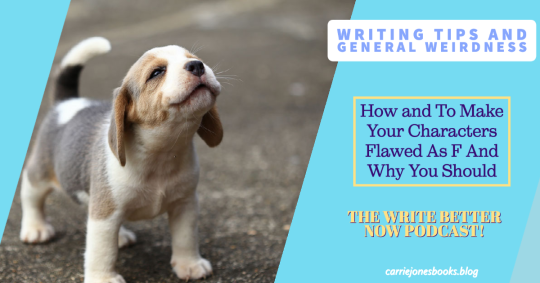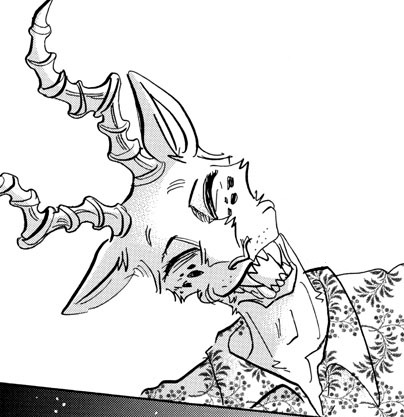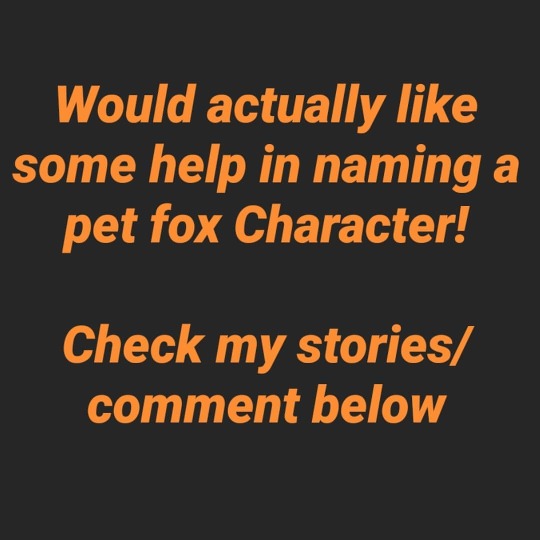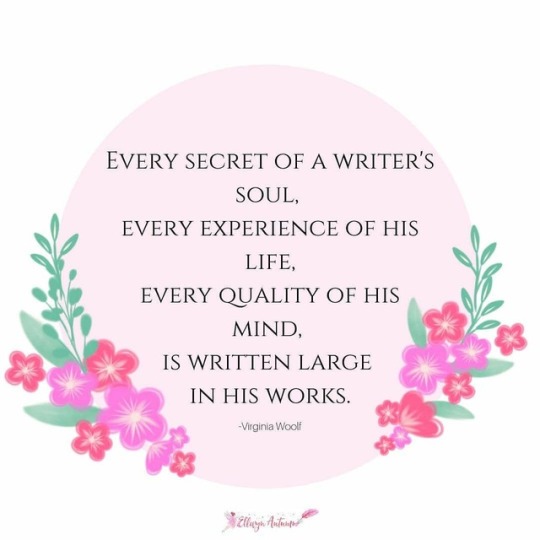#WritingCharacters
Text
How to Create Realistic Characters for Your Story
How do you breathe life into your story’s characters? How can you craft figures that are relatable, complex, and compelling? We’re diving into the art of character creation, laying out the steps to transform your characters from flat to fully-fledged.
Understanding Your Characters’ Motivations and Goals
Understanding your characters’ motivations and goals is a crucial first step in creating…

View On WordPress
#Antagonist#CharacterArc#CharacterBackstory#CharacterCreation#CharacterDevelopment#CharacterMotivation#CharacterPersonality#Protagonist#RealisticCharacters#WritingCharacters
1 note
·
View note
Text
How and To Make Your Characters Flawed As F And Why You Should
How and To Make Your Characters Flawed As F And Why You Should
The character in your story is the heart of your story.
It does not matter if that character is a person or a troll or a manatee. That character is the soul of your story. Setting, theme, plot are important, but the most important aspect is creating a character that the reader can connect with.
That connection can be emotional.
That connection can be intellectual.
But there has to be a…

View On WordPress
#carriejones#editor#podcast#writing#writing advice#writingcharacters#writingcoach#writingcommunity#writingpodcast#writingtips
1 note
·
View note
Text
Thoughts: Rescue Tails: The Treacherous Tower by StacyPlays
Source: NetGalley & the Publisher – Thank you!TL;DR: I loved this young reader adventure – enough that I’m going to pick up the others!
Plot: Easy to follow but engaging with friendly writingCharacters: Very cute and I think will be relatable for most kids, especially girls who love animalsSetting: I know this is meant to be a Minecraft inspired series but I hardly noticed that at all. Easy to…

View On WordPress
6 notes
·
View notes
Video
youtube
How to Create Characters Easily - Your Characters are your Themes
Writers, Authors & Storytellers,
While creating Characters consider their Place in the Story.
Their Role & their Function.
People Stay for the Characters.
Long term Characters are meant to be Attaching.
Attaching Characters are Helpful, Proficient & Supportive.
Summary – 7 steps to a Sustainable Character
1/Define her Function in the Story.
2/Define her Role, if she’s part of a Team.
3/Decide of her Origins.
4/From her Origins define her Name & her Goal.
5/Define her Behavior traits.
6/Define her Relationships & Alignments.
7/Give her Quirks.
Creating Characters is easier if you make use of an Archetype system.
Create Great Characters Easily.
Here are Template to do it easily.
What would motivate you to Start your Story?
What do you want to Accomplish through it?
Subscribe if you want to make Writing more Pleasurable.
And tell us how we can make our Videos better.
The Action becomes the Behavior.
The Behavior becomes the Identity.
#characterdesign #writingtips #writingcharacter #charactertemplate #characterprompt #characterdevelopment
0 notes
Text
Villain ramblings.
Evil or morally-gray characters are always the most fun to write about. You get to dive into the minds of the complete opposite of the hero and you: The sick freaks, the loners, the worst cases of Byronic Heroes (*cough* Stavrogin *cough), horrifically-flawed individuals (Stannis, anyone?), and psychopaths. In a way, I guess it also means you are challenging yourself, diving into the darkest parts of the human mind and getting away with things you would never do or imagine doing. There are people who are simply brought up wrong, people who genuinely want to do the right thing but end up making horrible decisions, people who do wrong and strive to become better people, and then there are the ones who simply live for chaos and the pain of others–the ones who are so messed in the head that the people around them will never understand why they’re so evil.
As long as you don’t condone anything they do or say, you’re safe.
… ‘kay?

#writingcharacters#gazeopardrambles#gazeopardwritesstuff#melon#thejoker#jafar#ratigan#hades#rune#stavrogin#pyotr verkhovensky#nnoitra gilga#hougen
14 notes
·
View notes
Text
I wrote more shit, enjoy
" So welcome to my cabin friend, you may enter this lovely abode, but you won't get the pleasure of leaving." - Bill Duster
"Shattered innocence is a beautiful thing is it not?" - Cassidy Vanderbergh
"I'm the man who broke a thousand mirrors, because with luck like this, I'm fucked." -Steve Tethers
"Dose damned fools are walkin inta a nest of hurt." -Randall Lancaster
"I've got this fokin war in me 'ead that I just can't fuckin win, me anger is a fuckin lion waiting to pounce on the nearest fuckin gazelle in sight." - Stephen Vail
"Kadlin, your fate ain't intertwined in love and stars, your fate is one 'a crimson rivers and tears along the path you once called home.” - Davy Blight
"Welcome to the A.C.C, we alter, create and control, and today, today we control you." - Olympus Woods
"The pain I've felt inside my own head is immeasurable, the regrets I have are as countless as the stars in the night sky." - Amber Vail
"When people ask me why I do what I do I say, because that's how I was raised." - Bill Duster
"I'm a damn killer, and you better tell the whole world i'm coming home, cause someones gonna need a grave, will it be you? Or maybe it'll be your family that's dropped in a pine wood box next, that's for me to decide and you to stew on." - Oswega Creek
"Well, my mother named me Uriel because she said an angel would always be watching over me, but it sure as hell doesn't feel like it, some people have an angel on their shoulder, some have a devil on their shoulder, I, I have a devil inside my mind." - Uriel Witsman
"He'll watch his dearest Kadlin run, and not away from me, but red, he'll watch her run red." - Davy Blight
"There is an equal mix sin and divinity in these bones, a desire to flip the switch, a desire to turn the light on, and yet, there is also the temptation of staying in the dark, in the coldest shadow of me." - Sam Dellwotfire
1 note
·
View note
Text
Think outside the box when creating magic systems. It. Helps.
Hi! I’m @lighthearted.writer on Instagram!
From what I’ve seen, creating diverse magic systems in stories can be a pretty daunting task. We often worry that our system will end up being too similar to an already existing one, and therefore our readers won’t care or our book won’t sell (or something else along those lines). Deep down, every writer wants people to love or be helped by their story, so of course, having something like a diverse world is always going to be in the back of our heads.
However, I don’t think we should be worrying about diversity from story to story as much as we do. You’ve heard this a hundred times before, but I’ll say it again: everything’s been done before. We’ve seen telekinesis, we’ve seen flying, we’ve seen people control earth’s elements to save their village. You can change things as much as you want, but they’ll never be completely different.
But you can still make the effort, and that’s what I’m going to try to help you do :)
Protip: take a simple power (let’s use telekinesis as an example because I love that power) and start out with that as it is. It’s just like any other telekinetic power, the one you’ve seen been used a thousand times before in a thousand different movies and books. Now, plan just one character (not a whole race of people) that use this power. Why do they need it? What purpose does it serve for this story? How does it compliment their personality specifically and how will it be different from others? The key here is to give the power purpose. If they aren’t going to use it, then why give the ability to them in the first place? Don’t worry about anything else just yet!
Next, plan the things your character needs to interact with in the story. Write them into some scenes before (or after, it doesn’t really matter) you’ve started your drafts. For example, if your character is going to get trapped in a room with some strange villains, then write this seen. It will be good practice, and you aren’t obligated to actually use the scene. While you’re writing the scene, think about how you can have your character use their telekinetic ability to get out of certain situation. Add onto their magic as you go along.
IMPORTANT: think outside the box!
If your character sees a large animal standing in their path, their first instinct will be to move it with their powers. It could be that simple, but what if there was a little more to it? Maybe when they go to move the animal, it knocks the animal unconscious with the force. That makes it a little different. Since this happens, it could either be intentional or it could even mean that something is wrong with the person using the power. Maybe they don’t have enough training. Maybe only few people can do this when they use telekinesis. How does this effect them mentally and physically? Now that your character has knocked someone unconscious (if it’s a person), it’s their job to hide the mess. This is gonna have some setbacks. Do they wish they could move things normally? You should also think about adding other things that your little telekinetic can do besides one “out of the box” thing.
Let’s use another example: shapeshifter. We’ve seen a million of them. But have you ever seen one that can only take the form of someone else by looking them directly in the eyes? Seems kind of weird doesn’t it? And it makes things a lot more difficult.
For me, it’s all about giving my characters strong powers that still make their life difficult.
Of course there's loads more that has to go into creating a magic system, such as whether it’s a hard or soft magic system, but hopefully, this can at least get you started.
As soon as I started thinking out of the box, of the most OUTRAGEOUS and weird powers (that made sense for my story/characters) I came up with some pretty cool stuff.
We like a strange magical kid.
#writer#writing#write#writingtips#writingadvice#writinghelp#writingmagic#writingcommunity#writingcharacters#oc#characters
7 notes
·
View notes
Photo

Channeling your inner sass into a character is probably one of the best feelings in the world. #writersofinstagram #writerslife #fictionwriting #writingcharacters #sassywriters https://www.instagram.com/p/B177nxCnUz5/?igshid=f5eeu3nw53aq
1 note
·
View note
Photo

Jason Reynolds, author of “All American Boys,” “”Look Both Ways,” and the incredible and haunting “Long Way Down,” was born December 6, 1983. #gsbauthorquotes #gsbquotesjasonreynolds #gsbreadsjasonreynolds #gasstationburrito #onthisday #literaryhistory #bookstagram #books #bookworm #author #authorquotes #writer #writerquotes #jasonreynolds #howtowrite #writing #writingcharacters #allamericanboys #longwaydown #lookbothways https://www.instagram.com/p/CIdjClkhbEI/?igshid=6wouwm84qvr9
#gsbauthorquotes#gsbquotesjasonreynolds#gsbreadsjasonreynolds#gasstationburrito#onthisday#literaryhistory#bookstagram#books#bookworm#author#authorquotes#writer#writerquotes#jasonreynolds#howtowrite#writing#writingcharacters#allamericanboys#longwaydown#lookbothways
0 notes
Photo

Would like some help in naming a fox pet character for a story I'm writing. Check my stories or answer below! If you would like to check out future writings check out my Patreon page Patreon| creating podcasts and writing stories: https://www.patreon.com/user?u=23929748 #Stories #writers #writerslife #help #writinghelp #ideas #foxes #animals #storywriting #story #writersofinstagram #writer #writerscommunity #sendhelp #writinghelp #ideahelp #concept #concepthelp #characters #characterwriting #writingcharacters Im also the host and producer of Crowy26’s The Crows Nest Podcast https://soundcloud.com/crowy26scrowsnestpodcast And you can find my merch here! https://www.redbubble.com/people/crowy26/portfolio https://www.instagram.com/p/B9cnHC3HggF/?igshid=1gkh9dw22tok8
#stories#writers#writerslife#help#writinghelp#ideas#foxes#animals#storywriting#story#writersofinstagram#writer#writerscommunity#sendhelp#ideahelp#concept#concepthelp#characters#characterwriting#writingcharacters
0 notes
Photo

This is so beyond true. I do personalize a lot of my writing. Some characters are loosely based on real people. Some of the issues some of the characters have/go through are real. There is a lot of hidden truths in my writing and I think it gives me an attachment to certain characters. But, at the same time, my favourite characters are the characters I build from nothing. I get attached to those characters the most. (Like "Remy" from my last book and the current book I'm writing (part 2 of last book) I also love testing the waters and working with all of my characters (from all of my work). I love building worlds and living different lives through the characters that I create. It is different and adventurous. Some characters have painful pasts and darkness due to those pasts and some are living their dreams. You never live the same life twice when you're living through a character. I love creating. I love everything about writing. (📷 from Pinterest) #writing #writersofinstagram #writer #iamwriting #iamawriter #writingistherapy #writingismyfreedom #ilovetowrite #ilovewriting #writingcharacters https://www.instagram.com/p/BwNBPI9hBLX/?utm_source=ig_tumblr_share&igshid=5l7ml9zh8b1g
#writing#writersofinstagram#writer#iamwriting#iamawriter#writingistherapy#writingismyfreedom#ilovetowrite#ilovewriting#writingcharacters
0 notes
Text
LIKE YOUR DAMN CHARACTER
LIKE YOUR DAMN CHARACTER
So, we’re still talking about characters here and I’m going to go out on a limb here and say:
It’s important for people to like your main character.
Obviously, this isn’t always true. There are exceptions, but just in general, okay? You all can debate about it in the comments if you like. It might be fun.
A big key to the reader liking your character is:
YOU LIKING YOUR CHARACTER.
It’s hard…

View On WordPress
1 note
·
View note
Text
Eysenck’s PEN Personality Model
Overview
Personality here is defined as a “pattern of deeply embedded psychological characteristics” that are not easily changed, and that express themselves “automatically in almost every facet of functioning” (5). Eysenck believed that personality was more than observable behavior, but permeated our subconscious, and accounts for the differences between individuals. Because according to Eysenck personality is seated within biological factors and genetics and other 'natural factors', environmental and social pressures and other ‘nurture’ type factors are less important. Because personality is biology dependent, he believed that even vermin like rats had them.
Eysenck uses three dimensions or traits to characterize personality; a trait here is an aspect of personality that is relatively consistent and therefore predictable. This trait theory wasn’t particularly original, the ancient Greeks had a similar idea, and medieval Europeans had their theory of four humors, which they also tied to biology. Nor is this the end all theory of personality traits today, there are other competing models such as the Five Trait Model. However, Eysenck was one of the first to try and use empirical data in concordance with the trait theory.
Eysench’s research was done using factor analysis, a process of allowing the subject to rate themselves on a trait, such as an extroverted personal rating themselves as outgoing. Obviously, this could lead to problems as it relies on accurate self-reflection. This methodology puts him in the idiographic view (rather than the nomothetic view), which assumes that each person has a “unique pyschological structure and that some traits are possessed by only one person and that there are times when it is impossible to compare one person with others” (3).
Eysenck himself was an impressive man. He was born in Germany in 1916, raised by his grandmother after his parent’s divorce, and fled Germany at 18 because he was in danger for sympathizing with the Jewish people. During World War II, he was a psychologist at an emergency hospital where he questioned the reliability of psychiatric diagnoses, resulting in a life-long feud with main-stream clinical-psychology. This was where he compiled his behavioral questionnaire in order to give a preliminary diagnosis, and as a result, produced his PEN theory.
He became a professor at the University of London. He wrote over 75 books and 700 articles, writing till his death in 1997. At his death, he was the most cited author in psychology journals.
Specifics:
Eysenck’s identified traits are: Neuroticism (N), Extraversion (E), and Pyschoticism (P). Neuroticism is stability, as opposed to anxiety. Extraversion ranges from being outgoing and sociable to being introverted and withdrawn. Pychoticism isn’t necessarily a psychotic break but rather displaying emotions extremely or inappropriately as well as having a general antipathy toward social convention or manners.
The name ‘neuroticism’ comes from nervous disorders called neuroses, hence neuroticism refers to how extensively one suffers anxiety or nervousness. Having a high neurotic score doesn’t necessarily mean being neurotic, but means being more susceptible to those sorts of conditions (this is one of the criticisms of the theory, giving relatively ‘normal’ people abnormal labels). Not only are people with neuroticism more easily startled, but they require more time to come down from their reaction.
Eysenck believed that this dimension is rooted in the sympathetic nervous system. If someone had an overactive, more responsive sympathetic nervous system, they are more likely to get a panic attack, or display other neurotic symptoms. The sympathetic nervous system controls our emotional reaction to emergency situations, releasing adrenaline, opening the pupils, or giving goosebumps. By initiating this process, the body believes it’s in danger and so continues to intensify the physical aspects of panic, creating a downward spiral of amplifying fear.
The extraverted-introversion spectrum is fairly mainstream today, although it can have slightly different meanings in different contexts, and tends to be exaggerated. Here, it’s used to measure social inhibition and excitation. Inhibition is the brain resting or protecting itself from overwhelming simulation, whereas excitation is the brain preparing or waking up. According to Eysenck, the extravert has strong inhibition; if they witness a trauma or other overwhelming phenomena, they’ll shut down and go numb and should recover quickly. This allows them to be more sociable and optimistic, however they can be less responsible. The introvert will feel like they see the trauma in slow motion, and need to take longer to recover. This is what makes in the introvert more cautious in social situations, they remember their past fiascos and are able to both learn from them and over-analyze them, while the extrovert can shrug embarrassments off. Introversion then can tends to lead to pessimism, however it’s also linked to reliability as the consequences of their actions are more easily recognized.
The third dimension, psychoticism, was a result of Eysenck’s research within English mental institutions. This includes a proclivity toward risk-taking, a disregard to common sense or social convention, and inappropriate emotional expression. Biologically, Eysenck linked it to higher testosterone levels. However, there’s been considerable pushback against the designation of this trait, and some have replaced this one dimension with three, Insensitivity, Orderliness, and Absorption. This adaption brings the PEN theory closer to its contemporaries, but also orphans it from Eysenck’s emphasis on biological reactions.
There are several critiques of the theory, or even the concept of personality psychology in general; depending on the definition of ‘observe’ personality may be impossible to observe, and thus would be outside the scope of the scientific method. Others argue that Eysenck doesn’t weigh in environmental condition enough; someone who had been abused as a child for instance might appear introverted, whereas their natural self might have been extroverted if not for their trauma. There’s also a critique of wording, as in this model, traits like ‘psychoticism’ can be overused. Eysenck himself didn’t seem entirely satisfied either, since he wasn’t convinced that traits were fixed for all time; certain aspects of biology are malleable, so personality could be one of them.
Why It Matters
Eysenck’s PEN theory is often used to study risky or criminal behavior. Typically, people with low neuroticism and high extroversion are more likely to engage in risks, including crime. Which makes sense, no one is going to mug someone if they get a panic attack when they hold a weapon. However, that doesn’t mean that introvert or those with high neuroticism have an advantage, they are also more likely to suffer anxiety or related conditions. Even high psychoticism—or at least, some aspect of it—doesn’t have to be a bad thing; Eysenck himself frequently clashed with established authority, from the German government to respected British psychologists.
An interesting aspect of the PEN theory is that people have different biological reactions to danger. This doesn’t necessarily mean that some people are programmed to be brave so that their courage means nothing, or that some people are doomed to be cowards, but it could give a more plausible reason for certain people not having as strong a reaction to tragedy, or contrast a character's choices with their physical reaction.
The PEN theory also allows for a wide variety of ‘good’ and ‘evil’ characters. A more socially cautious character can be wiser and responsible, or manipulative or apathetic to others. A more neurotic character can be clever or cowardly. A character with high pyschoticism can be a Byronic hero that plays by their own rules no matter what society says, or they can be a selfish brat that just does whatever they want. Moreover, by playing up the biological underpinning of these traits, you can create more tension as a character tries to break free from their biological destiny. The whole concept of factor analysis or characters self-identifying with some traits could be fun to play with, balancing who people believe they are with who they are.
There are a few sample tests you can take online, this one doesn't store your data or anything creepy like that: https://www.idrlabs.com/pen-personality/test.php.
1. https://webspace.ship.edu/cgboer/eysenck.html
2. https://www.ncbi.nlm.nih.gov/pmc/articles/PMC2858518/
3. https://www.simplypsychology.org/personality-theories.html
4. http://www.personalityresearch.org/pen.html
5. https://www.ukessays.com/essays/psychology/critical-evaluation-of-eysencks-theory.php
6. https://www.psychologistworld.com/personality/pen-model-personality-eysenck
19 notes
·
View notes
Video
youtube
How to Create Characters Easily - Main Characters Goals
Writers, Authors & Storytellers,
While creating Characters consider their Place in the Story.
Their Role & their Function.
People Stay for the Characters.
Long term Characters are meant to be Attaching.
Attaching Characters are Helpful, Proficient & Supportive.
Summary – 7 steps to a Sustainable Character
1/Define her Function in the Story.
2/Define her Role, if she’s part of a Team.
3/Decide of her Origins.
4/From her Origins define her Name & her Goal.
5/Define her Behavior traits.
6/Define her Relationships & Alignments.
7/Give her Quirks.
Creating Characters is easier if you make use of an Archetype system.
Create Great Characters Easily.
Here are Template to do it easily.
What would motivate you to Start your Story?
What do you want to Accomplish through it?
Subscribe if you want to make Writing more Pleasurable.
And tell us how we can make our Videos better.
The Action becomes the Behavior.
The Behavior becomes the Identity.
#characterdesign #writingtips #writingcharacter #charactertemplate #characterprompt #characterdevelopment
1 note
·
View note
Photo

That moment when your own book is recommended to you by Amazon. #writerscommunity #writingprompts #writingcharacter #characterdesign #characterdelopement https://www.instagram.com/p/BqYsBTxlXOz/?utm_source=ig_tumblr_share&igshid=pn33jrg7qikq
1 note
·
View note
Text
Villains Should be Teddy Bears with Knives as Hearts 🖤🖤🖤🖤🖤🖤🖤🔪🐻

Villains. They can’t exist only to be evil. Relying on your villain to be a psychopath who does evil things for the sake of causing misery is boring. And lazy.
The villain’s wants and needs are in opposition to the main character’s but just as valid. Remember that; Just As Valid. So, when writing your villain put as much care into them as your main character (MC). As a reader I want to hurt for the villain but I know, in the end, they must fail.
Don’t just slap a cool name and a twirling mustache on the page and call it a day. Let your reader hurt for the villain. Let them see the good in them. Create a villain who’s approachable and affable. Make your reader want to take an afternoon tea and willingly spill their secrets to them.
Of course, your villain, in true villainy, will turn around and rip your reader’s heart out and leave them pleading for more. Consider the following items when fleshing your villain. Or, as we’ll call her, Peggy.
Imagine the story from your villain’s perspective
🔪Peggy didn’t appear out of a vacuum to make MC’s life hell. There’s a reason Peggy is evil. Take time to write about Peggy’s motives, why she hates MC, does she view MC as her personal Peggy?
🔪What is Peggy’s backstory? What brought her to be the villain of your main character?
🔪Peggy had a childhood. Take some time and imagine what Peggy was like as a child, what her living situation was, think of key parts of her experience that shaped her personality into the villain she is in your story.
🔪Plot out ways in which your villain succeeds
For this exercise, Peggy succeeds in all her evil deeds. Type up ideas of what that world looks like for Peggy and what her next thing to conquer would be.
🔪Make your villain relatable
Peggy has a soft side. Does she like kittens and rainbows? Does she have a romantic partner? A BFF? Does she have a cat named Wally with a bushy tail that she loves to feed fish treats to? Maybe. Giving Peggy normal things that everybody cares about makes her relatable.
My current fave: In The Walking Dead, Rick Grimes is the hero and Negan is the villain. But Negan sees himself as the hero in his own story. He is the savior. And Rick is ruining that. For EVERYBODY. And Negan has to be the one to stop him. You know for sure Negan is the villain but a tiny voice, in the back of your head, wonders, is he though?
Who's top on your list of lovable villains?
What's a scene that shows a villain's humanity?
This post originally appeared here --as part of Laura Seeber's series on villains. Other contributors to the series had some insightful things to say about villains.
I made some changes and reposted my piece here with permission of Laura R. Seeber to link back to her blog. (She's got other great posts there, I definitely recommend you check it out.)
Contact me at [email protected]
I'm happy to talk to you and answer any questions or provide a quote for editing
You can also schedule a free consultation here https://www.polarbearediting.com/book-online
2 notes
·
View notes